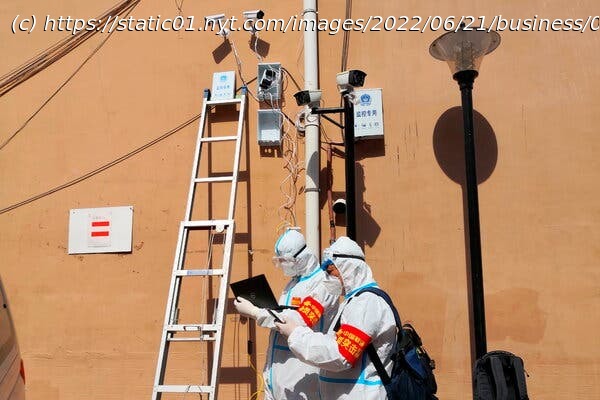Vast surveillance data allows the state to target people whose behavior or characteristics are deemed suspicious by an algorithm, even if they’ve done nothing wrong.
The more than 1.4 billion people living in China are constantly watched. They are recorded by police cameras that are everywhere, on street corners and subway ceilings, in hotel lobbies and apartment buildings. Their phones are tracked, their purchases are monitored, and their online chats are censored. Now, even their future is under surveillance. The latest generation of technology digs through the vast amounts of data collected on their daily activities to find patterns and aberrations, promising to predict crimes or protests before they happen. They target potential troublemakers in the eyes of the Chinese government — not only those with a criminal past but also vulnerable groups, including ethnic minorities, migrant workers and those with a history of mental illness. They can warn the police if a victim of a fraud tries to travel to Beijing to petition the government for payment or a drug user makes too many calls to the same number. They can signal officers each time a person with a history of mental illness gets near a school. It takes extensive evasive maneuvers to avoid the digital tripwires. In the past, Zhang Yuqiao, a 74-year-old man who has been petitioning the government for most of his adult life, could simply stay off the main highways to dodge the authorities and make his way to Beijing to fight for compensation over the torture of his parents during the Cultural Revolution. Now, he turns off his phones, pays in cash and buys multiple train tickets to false destinations. While largely unproven, the new Chinese technologies, detailed in procurement and other documents reviewed by The New York Times, further extend the boundaries of social and political controls and integrate them ever deeper into people’s lives. At their most basic, they justify suffocating surveillance and violate privacy, while in the extreme they risk automating systemic discrimination and political repression. For the government, social stability is paramount and any threat to it must be eliminated. During his decade as China’s top leader, Xi Jinping has hardened and centralized the security state, unleashing techno-authoritarian policies to quell ethnic unrest in the western region of Xinjiang and enforce some of the world’s most severe coronavirus lockdowns. The space for dissent, always limited, is rapidly disappearing.
“Big data should be used as an engine to power the innovative development of public security work and a new growth point for nurturing combat capabilities,” Mr. Xi said in 2019 at a national public security work meeting. The algorithms, which would prove controversial in other countries, are often trumpeted as triumphs. In 2020, the authorities in southern China denied a woman’s request to move to Hong Kong to be with her husband after software alerted them that the marriage was suspicious, the local police reported. An ensuing investigation revealed that the two were not often in the same place at the same time and had not spent the Spring Festival holiday together. The police concluded that the marriage had been faked to obtain a migration permit. The same year in northern China, an automated alert about a man’s frequent entry into a residential compound with different companions prompted the police to investigate. They discovered that he was a part of a pyramid scheme, according to state media. The details of these emerging security technologies are described in police research papers, surveillance contractor patents and presentations, as well as hundreds of public procurement documents reviewed and confirmed by The Times. Many of the procurement documents were shared by ChinaFile, an online magazine published by the Asia Society, which has systematically gathered years of records on government websites. Another set, describing software bought by the authorities in the port city of Tianjin to stop petitioners from going to neighboring Beijing, was provided by IPVM, a surveillance industry publication. China’s Ministry of Public Security did not respond to requests for comment faxed to its headquarters in Beijing and six local departments across the country. The new approach to surveillance is partly based on data-driven policing software from the United States and Europe, technology that rights groups say has encoded racism into decisions like which neighborhoods are most heavily policed and which prisoners get parole. China takes it to the extreme, tapping nationwide reservoirs of data that allow the police to operate with opacity and impunity. Often people don’t know they’re being watched. The police face little outside scrutiny of the effectiveness of the technology or the actions they prompt. The Chinese authorities require no warrants to collect personal information. At the most bleeding edge, the systems raise perennial science-fiction conundrums: How is it possible to know the future has been accurately predicted if the police intervene before it happens? Even when the software fails to deduce human behavior, it can be considered successful since the surveillance itself inhibits unrest and crime, experts say.






